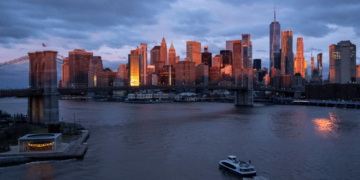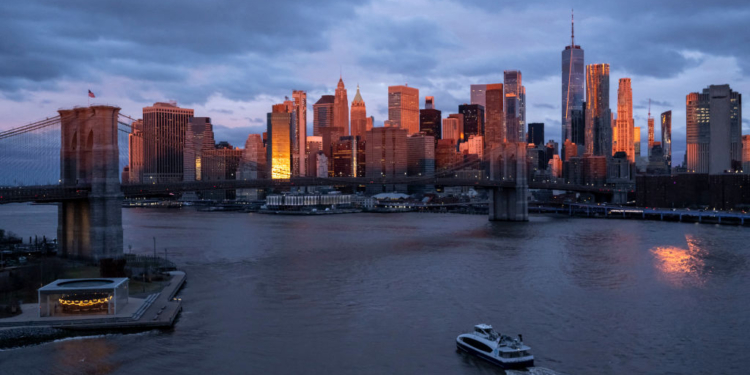It’s the least wonderful time of the year aside from tax day: Daylight Saving Sunday.
On Sunday, most of us are going to wake up to find that we’ve magically lost an hour. Spring forward, fall back, as they say! However, most people generally prefer to make the fall back, even if it means earlier sunsets, thanks to the fact we get an extra hour of sleep.
However, this is more than just an annoyance. It’s a public health problem, and the numbers back that up.
According to the American Heart Association, “scientific researchers have noticed a marked increase in heart attacks and strokes in the days following this time change each year.
“This year, daylight saving time begins on Sunday, March 10. Daylight saving time is the practice of setting the clocks an hour ahead of standard time to achieve longer evening daylight in the summer months. While gaining extra daylight may be a nice change, the transition could come with some health challenges,” the association said about the shift in a media release March 1.
“According to a study of hospital admissions across the state of Michigan, there was a 24% increase in heart attacks on the Monday following the switch to daylight saving time.
“In a study from Finland, researchers found that the overall rate of ischemic stroke was 8% percent higher during the first two days after a daylight saving time transition. Other research has found that, in general, more serious heart attacks occur on Mondays than on any other day of the week, making the day after the time change even more worrisome.”
Only two states currently follow Standard Time all year: Arizona and Hawaii. States are prohibited from following Daylight Saving Time year-round.
So, what about a bill allowing permanent Daylight Saving Time? That’s the solution being floated by some politicians, including Republicans.
According to USA Today, Florida Sens. Marco Rubio and Rick Scott reminded Americans about the Sunshine Protection Act — introduced by them, passed unanimously by the Senate in 2022 and taken up by the House in 2023.
“We’re ‘springing forward’ but should have never ‘fallen back.’ My Sunshine Protection Act would end this stupid practice of changing our clocks back and forth,” Rubio said in a media release last week.
This sounds like a great idea. And, indeed, 62 percent of respondents in an Economist/YouGov poll taken last March indicated they would like to make the time switch permanent.
However, one is reminded of H.L. Mencken’s famous quote about merely going by the vicissitudes of the majority: “Democracy is the theory that the common people know what they want, and deserve to get it good and hard.” This has already been tried before, during the first oil crisis of the 1970s, and it turned out to be a bust.
According to The New York Times, Congress passed the Emergency Daylight Saving Time Energy Conservation Act in 1973 as a two-year experiment in permanently springing forward.
“The experiment, however, ran afoul of public opinion — parents became concerned about traffic accidents involving their children, who were going to school in the predawn darkness on winter mornings,” the Times reported in October of 1974, as the bill was being repealed. “The Department of Transportation was charged with studying the experiment and reporting to Congress. Its study indicated an energy savings of 0.4 per cent to 1.5 per cent but no clear picture emerged on traffic accidents.”
“There seemed to be some indication that there were more deaths and everyone got a little nervous,” a House staff member told the Times.
Daylight isn’t like capitalism: It’s a zero-sum game. Move an hour here or an hour there and you’ll still have sunrise and sunset. Heck, in this computerized age, you could come up with a system where sunset was affixed at 8 p.m. every night, or affix sunrise at 8 a.m. Unless you’re directly on the equator, you can’t have both.
The quote is apocryphally attributed to an “old Indian chief.” Whether or not that part is true, the quote itself absolutely holds water: “Only the white man would believe he could cut a two inches off the top of his blanket, sew it to the bottom, and have a longer blanket.”
Not that this is discouraging legislators from letting the people get what they want good and hard: “According to the National Conference of State Legislatures, 28 bills have been introduced this year regarding daylight saving time and 36 carried over from the previous legislative session,” USA Today reported. “About two dozen states are considering enacting permanent daylight saving time if Congress allowed such a change. Twenty other states have legislation under consideration to have permanent standard time.”
Right. And when they do, no doubt whatever discontent voters experienced will be visited upon Sens. Rubio and Scott, along with the senators and representatives who voted for this, who voters will claim should have known better. It’s always something.
Unless you move, the amount of sunshine you get will never change from year to year. Period. You can call time whatever you want to call it, but unless you alter your habits to account for the sunshine you have, the problem will always persist.
There’s proof the current system doesn’t work. There’s also proof that proposed changes don’t work, either. Maybe it’s time we started treating Standard Time as if it were, you know, standard. Just a thought.
This article appeared originally on The Western Journal.


























 Continue with Google
Continue with Google